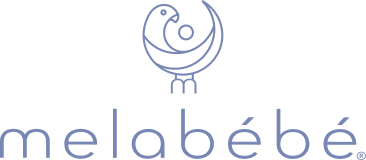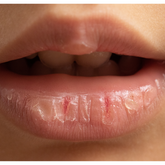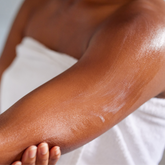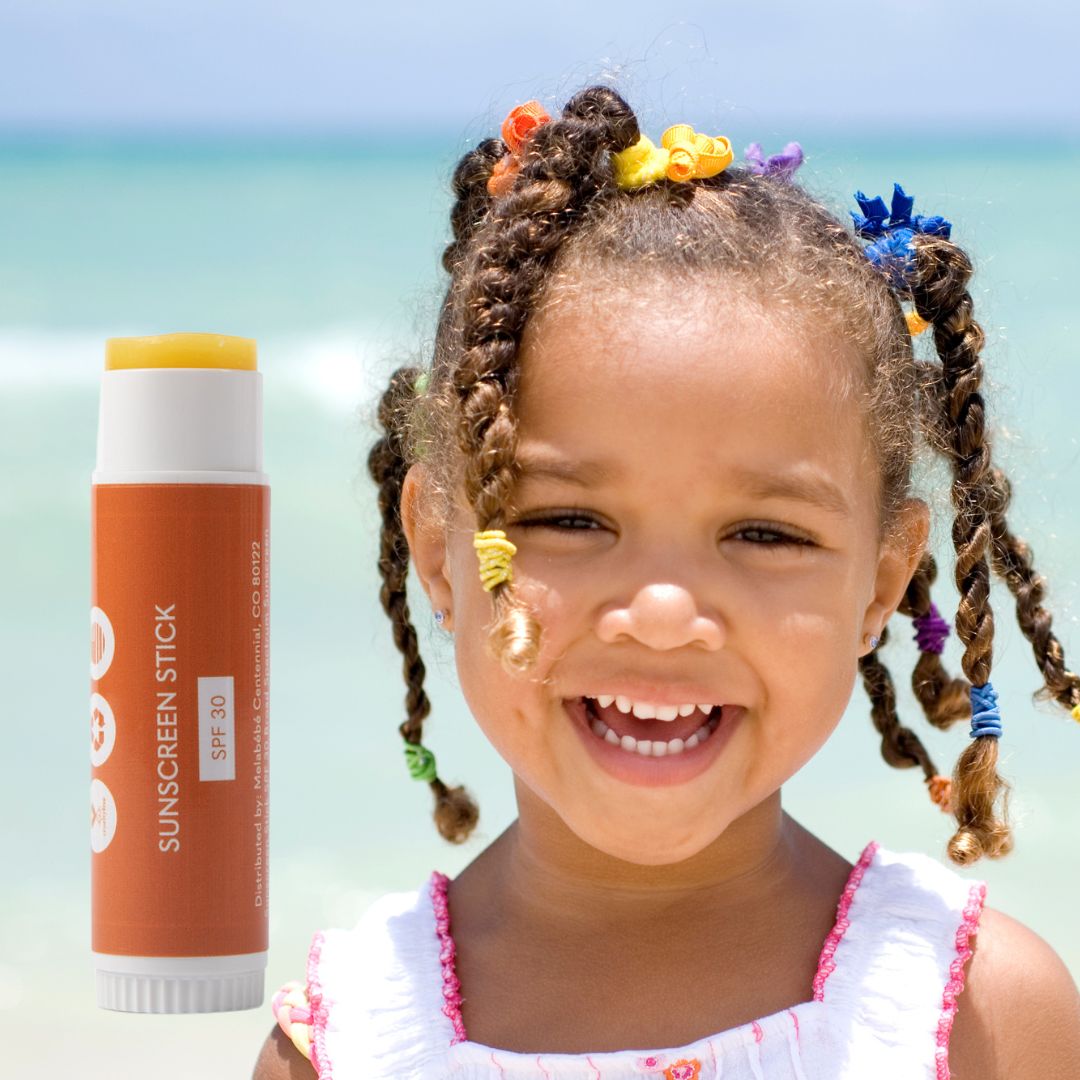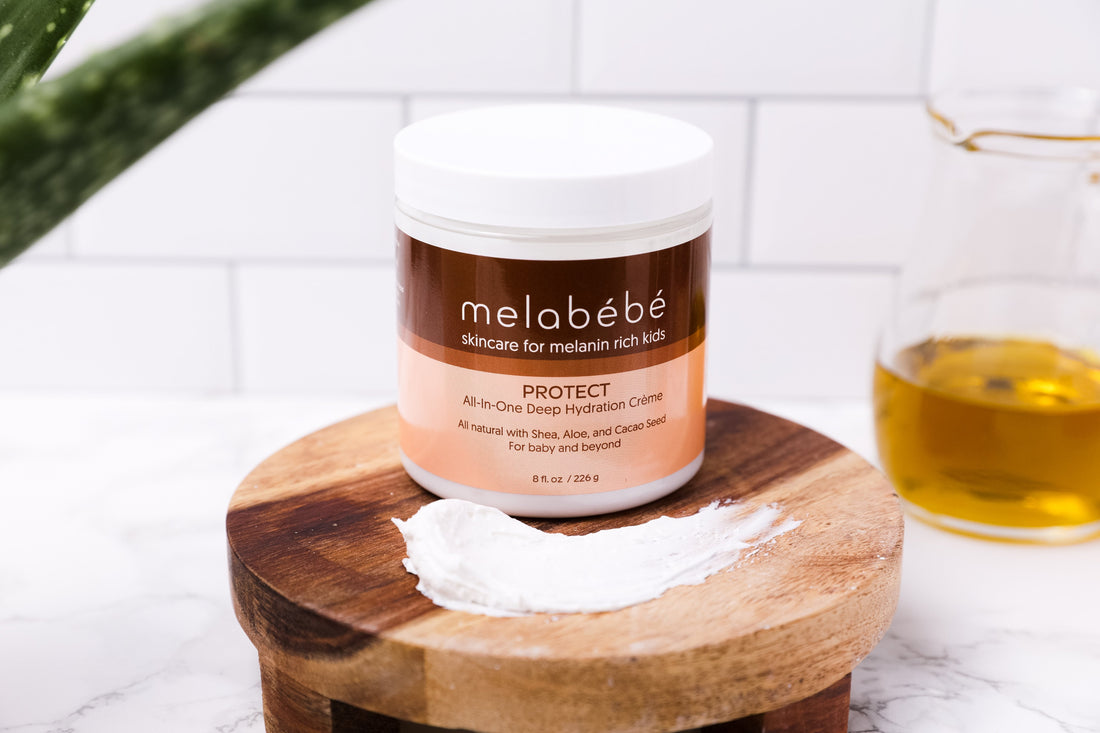
How You Can Treat Eczema On Melanin-Rich Skin

Eczema makes skin inflamed, leaving it dry and itchy. This common skin condition can appear anywhere on your child's body. The appearance of eczema changes depending on your skin type. While it appears red on lighter skin, eczema often looks gray or brown on melanin-rich skin.
Children with darker skin tones are more likely to experience eczema than Caucasian and Hispanic children. About 20% of African American children are diagnosed with eczema.
If your child suffers from a condition like eczema, it’s important to know how to treat it on skin of color. Help manage your child’s condition with skincare for melanin-rich children.
Eczema Symptoms
Eczema includes common skin conditions like:
- Atopic dermatitis
- Contact dermatitis
- Stasis dermatitis
- Dyshidrotic eczema
- Nummular eczema
All these conditions cause inflammation leading to dry, itchy skin. Your child may develop more than one form of eczema. The symptoms can come and go with periods of remission between eczema flare-ups.
In people with brown skin, eczema appears as brown, gray, or purple patches on the skin that may feel swollen, warm, itchy, or dry and scaly. Black people with eczema are more likely to experience dark circles and dryness around the eyes.
Eczema sufferers with dark skin are more likely to develop Papular Eczema on their arms, legs, and torso, which looks like small bumps on the skin. They’re also more likely to get eczema conditions around their hair follicles called follicular accentuation. Your child needs to receive proper skincare for melanin-rich skin to manage eczema and other skin conditions effectively.
Treatments for Eczema
A qualified dermatologist can examine your child’s symptoms and offer a specific treatment plan or skincare products for melanin-rich skin.
-
Topical Steroids
When first diagnosed or treating flare-ups of the disease, your doctor may prescribe a topical steroid treatment. This is a short-term treatment meant to calm the inflammation and reduce the itchiness of your child’s skin. Topical steroids are available in ointments, creams, and sprays in different strengths, depending on your needs.
Your doctor will give instructions for how many times per day to apply the steroidal treatment and where it should be applied. You may need to apply it to the child’s affected areas after a bath or shower. Always wash your hands after applying this treatment.
Longer-term treatment with steroids increases your child’s risk of adverse side effects. Common side effects from steroid treatment include acne, thinning of the skin, and dermatitis around the mouth. Your doctor may try to limit your child’s dosage and length of time on steroidal treatment to reduce potential side effects. Once treatment concludes, any side effects will eventually clear up on their own.
-
Non-Steroidal Topical Treatments
There are also non-steroidal topical creams like Elidel and Protopic available. Unlike steroids, these treatments are safe to use long-term. They are a class of medications called Topical Calcineurin Inhibitors. TCIs work by preventing certain immune cells from activating, reducing inflammation and other eczema symptoms. These medications are FDA approved for use in children aged two and up.
Eucrisa is another non-steroidal topical ointment for eczema your doctor can prescribe. This treatment is a Phosphodiesterase 4 (PDE4) inhibitor that works at an enzyme level to reduce the amount of eczema-related cytokines produced. Eucrisa is FDA approved to treat eczema in children aged three months and older. TCIs and PDE4s can be applied anywhere on the body, including more delicate areas like the face, eyelids, genitals, and other skin fold areas.
Additional treatment options include phototherapy, oral medications, and biological injections to help reduce inflammation and other symptoms. All of these therapies are safe to use with patients of all ethnicities.
-
Eczema and Hyperpigmentation
Patients with black skin are more likely to experience post-inflammatory hyperpigmentation after an eczema flare is treated. These are dark spots that remain on the skin once eczema has cleared. You can treat this condition using a prescription retinol lotion which helps lighten the dark spots over time.

Eczema Prevention
There are daily actions you can take to reduce your child’s eczema symptoms and prevent future flare-ups.
-
Keep Skin Moisturized
Moisturizers and thick hydration crèmes are great for treating eczema. They help rehydrate and seal your child’s dry skin while reducing itchiness. Lotions and gentle skincare products should be used daily to help prevent future eczema flares. Consider an all-natural product like Melabebe’s Protect for nurturing your child’s melanin-rich skin.
-
Don’t Use Hot Water
Only use lukewarm water for your child’s baths and showers. Hot water dries their skin out more and leaves it prone to itchiness. Try to limit their time in the water, as prolonged exposure dries skin out more. Make sure you’re giving your child’s melanin-rich skin nourishment with lotion after every bath or shower.
-
Always Use Fragrance-Free Products
Use fragrance-free or natural skincare for children to manage your child’s eczema. Eczema sufferers tend to have sensitive skin, and added fragrances in products can irritate your child’s condition.
When You Suspect Eczema
Always seek medical advice if you suspect your child is suffering from a skin condition like eczema. They can prescribe treatments to help clear your child’s eczema. In addition to medications, you can help treat your child’s eczema with the proper moisturizer. Look through reviewsof our product to see whether it’s the right choice for your child’s skin.
